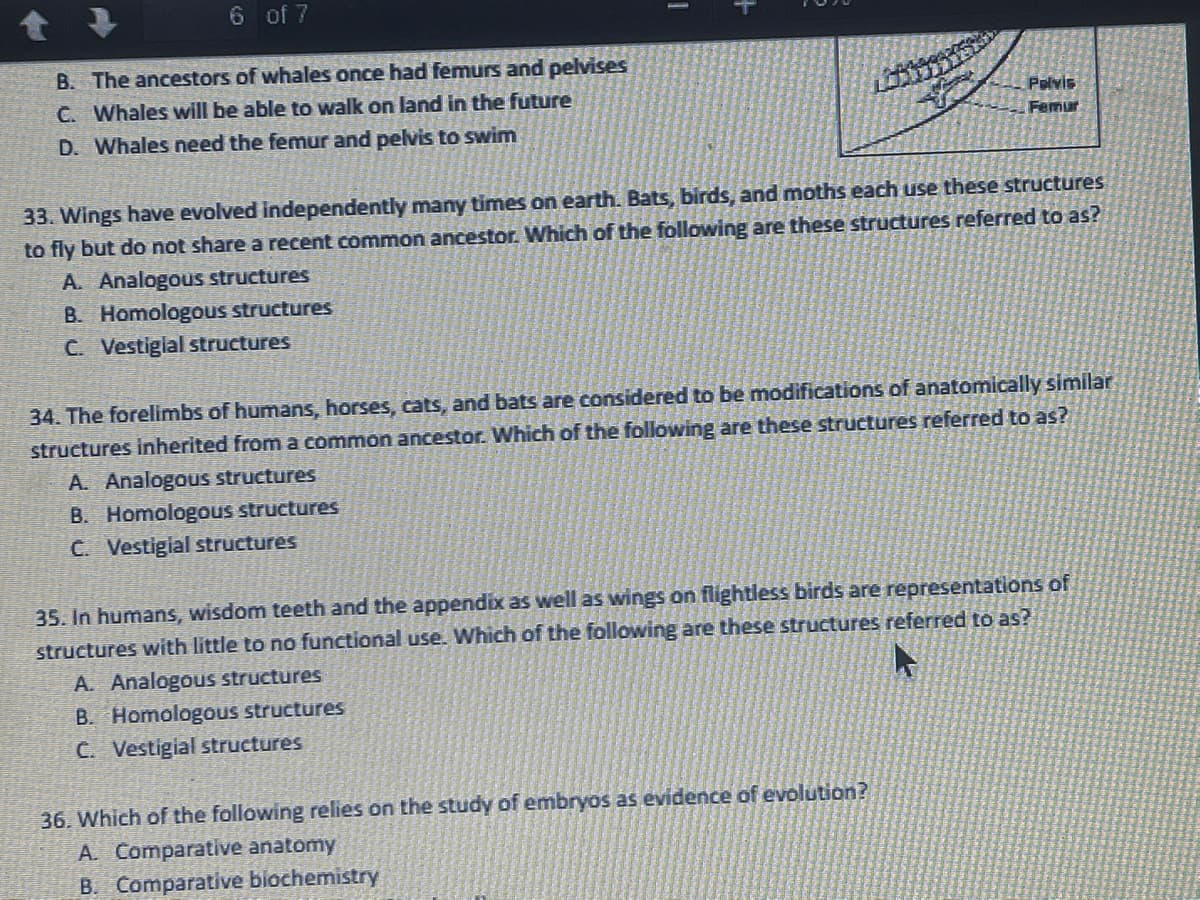6 of 7 B. The ancestors of whales once had femurs and pelvises C. Whales will be able to walk on land in the future Pelvis Femur D. Whales need the femur and pelvis to swim 33. Wings have evolved independently many times on earth. Bats, birds, and moths each use these structures to fly but do not share a recent common ancestor. Which of the following are these structures referred to as? A. Analogous structures B. Homologous structures C. Vestigial structures 34. The forelimbs of humans, horses, cats, and bats are considered to be modifications of anatomically similar structures inherited from a common ancestor. Which of the following are these structures referred to as? A. Analogous structures B. Homologous structures C. Vestigial structures 35. In humans, wisdom teeth and the appendix as well as wings on flightless birds are representations of structures with little to no functional use. Which of the following are these structures referred to as? A. Analogous structures B. Homologous structures C. Vestigial structures 36. Which of the following relies on the study of embryos as evidence of evolution? A. Comparative anatomy B. Comparative biochemistry
Anatomy and Physiology of Special Sensory Organs
Sensory organs can be labeled as special sensory structures that permit sight, hearing, odor, and flavor. Sensory structures permitting proprioception, touch, thermal, and pain perception can be classified as more advanced sensory organs. The sensory neurons are trained to find out modifications in the external and internal conditions so that a person's body can react to that change. A stimulus is the first signal that is recognized by any sensory receptor of the body. Stimulus is an impulse generated when there is a change in the surroundings of a person. For example, a heated environment will alert the brain through the thermal sensory organs and generate a reflex accordingly.
Sensory Receptors
The human sensory system is one of the most complex and highly evolved structures, which processes a myriad of incoming messages. This well-coordinated system helps an organism or individual to respond to external stimuli, appropriately. The sensory receptors are an important part of the sensory system. These receptors are specialized epidermal cells that respond to external environmental stimuli. These receptors consist of structural and support cells that form the peripheral unit of the receptor and the neural dendrites which receive and detect the external stimuli.

Step by step
Solved in 5 steps









